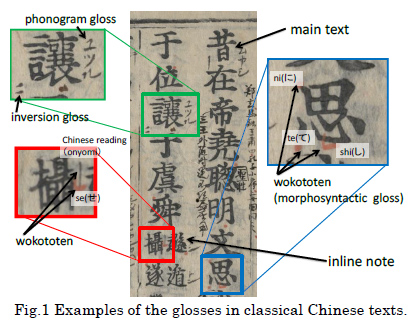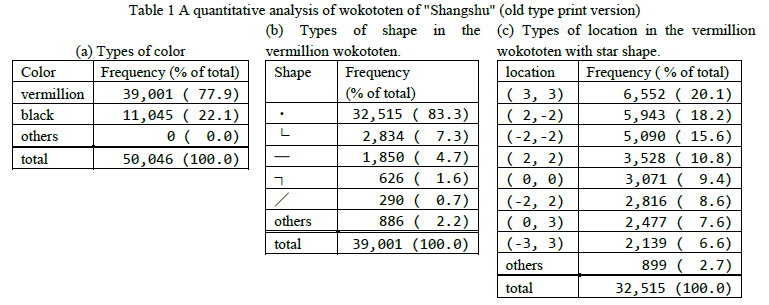Digitized Method for Wokototen Marks used for Classical Chinese Textbooks in Japan
The classical Chinese texts (漢文) were a common written language used around the East Asia for Sociology, Human Cultures, Religious and academic field. A lot of history books and Buddhist scriptures are written in classical Chinese. The past study focused on correctly understanding the gloss and texts.
This study purposes the digitalizing method for the “gloss” on the classical Chinese texts. A “gloss” is an explication of a word or phrase written in the margins or between the lines to support vernacular reading. This method enables to digitalize glosses and quantitative analysis of glosses. The goal of this study is automatic generation of the vernacular reading text from digitalized Chinese texts and glosses. This methods support to digitize (1) main text and inline note, (2) wokototen marks, (3) inversion gloss and (4) phonogram gloss. The wokototen marks (ヲコト点) is a gloss to show a part of speech. The symbols such as "·", "|", "/" had been used. This gloss is used before the katakana character fixed.

This method supports the types of wokototen marks listed in the “main wokototen correspondence table” described by Hiroshi Tsukishima "Kuntengoishusei" [1]. We developed a software to input gloss data with proposed format. We used the software to digitize "Shangshu" (old type print version)[2] for an example. Table 1 shows the result of quantitative analysis of wokototen marks. The analysis has been going on but these results match up nicely with the empirically predicted results.

Reference
- Hiroshi Tsukishima (2009). “Kuntengoishusei 訓点語彙集成”, Kyukoshoin
- National Institute for Japanese Language and Linguistics. "Shangshu (old type print version)尚書古活字版”. https://dglb01.ninjal.ac.jp/ninjaldl/ (accessed 2019-05-31).